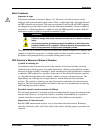
Appendices
210 UDA2182 Universal Dual Analyzer Product Manual January 2009
Chrome reduction is slow enough that 10 to 15 minutes may be required for a complete
reaction and this time increases if pH is controlled at higher levels. The pH also has a
direct effect on the ORP potential as shown in Figure 15-6. Therefore, pH must be
controlled to achieve consistent ORP control.
Second Stage of Chrome Removal
Neutralize the wastewater
In this stage the wastewater is neutralized to precipitate the Cr
+3
as insoluble chromium
hydroxide, Cr(OH)
3
. Another reason is to meet the discharge pH limits. Sodium
hydroxide or lime is used to raise the pH to 7.5 to 8.5 in the following reaction.
Cr SO NaOH Na SO Cr OH26 3 2
43 2 4 3
() ()
+
→
+
pH control point close to neutral point
Control of pH in the second stage is more difficult than in the first because the control
point is in the sensitive area closer to the neutral point. Although this reaction is fast, for
stability, a retention time of at least 10 minutes is usually needed for continuous
treatment. Proportional pH control is often used in this stage.
Remove suspended chromium hydroxide
Subsequently, a settling tank and/or filter will remove the suspended chromium
hydroxide. Flocculating agents are helpful in this separation.
Batch Treatment
Sequence of steps
Continuous treatment for chrome removal is shown in Figure 15-5. However, all of the
reactions can be achieved with semi-automatic batch control. Only a single tank with a
pH controller and an ORP controller are required. The steps of the treatment are
sequenced, and the pH setpoint is changed to give the same results as for the continuous
treatment. Acid is added to lower pH to 2.5; then reducing agent is added to lower ORP
potential to +250 mV. After waiting a few minutes to ensure a complete reaction (and
possible test for Cr
+6
), the sodium hydroxide is added to raise pH to 8 as in the second
stage of the continuous treatment. The settling period then begins, or the batch is pumped
to a separate settling tank or pond.
ORP Potential a Measure of Status
Sulfite is reducing ion
An oxidation-reduction reaction involves the transfer of the electrons from the reducing
agent to the ion being reduced. In the chrome removal application, sulfur in the sulfite
ion donates electrons to reduce the chromium; simultaneously the chromium oxidizes the
sulfur. The ORP potential is a measure of the status of the oxidation-reduction reaction;
the platinum or gold electrode detects the solution’s ability to accept or donate electrons.
Sulfite (SO
3
+2
), a reducing ion, donates electrons which makes the electrode more


















